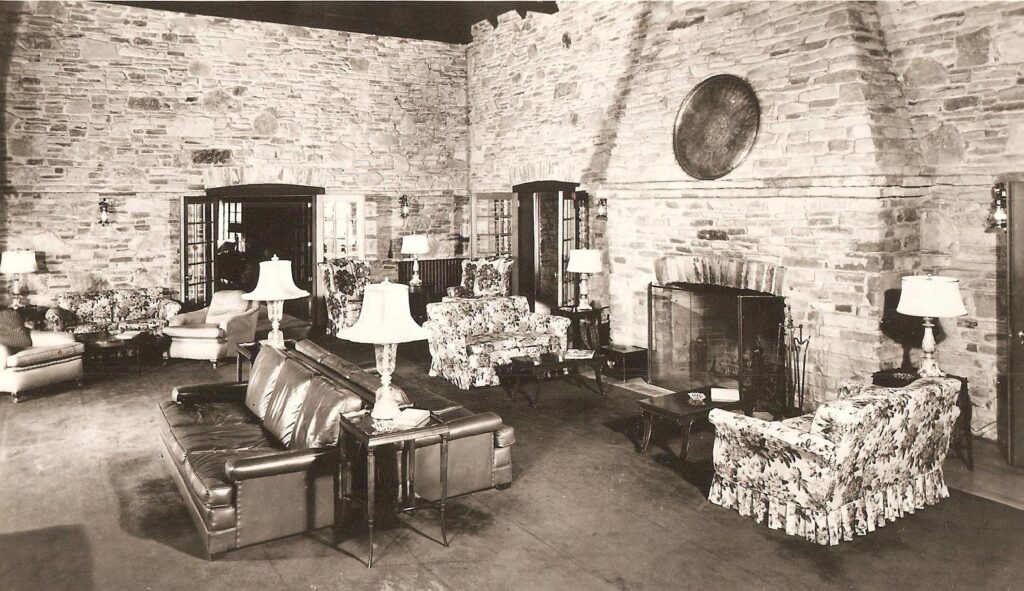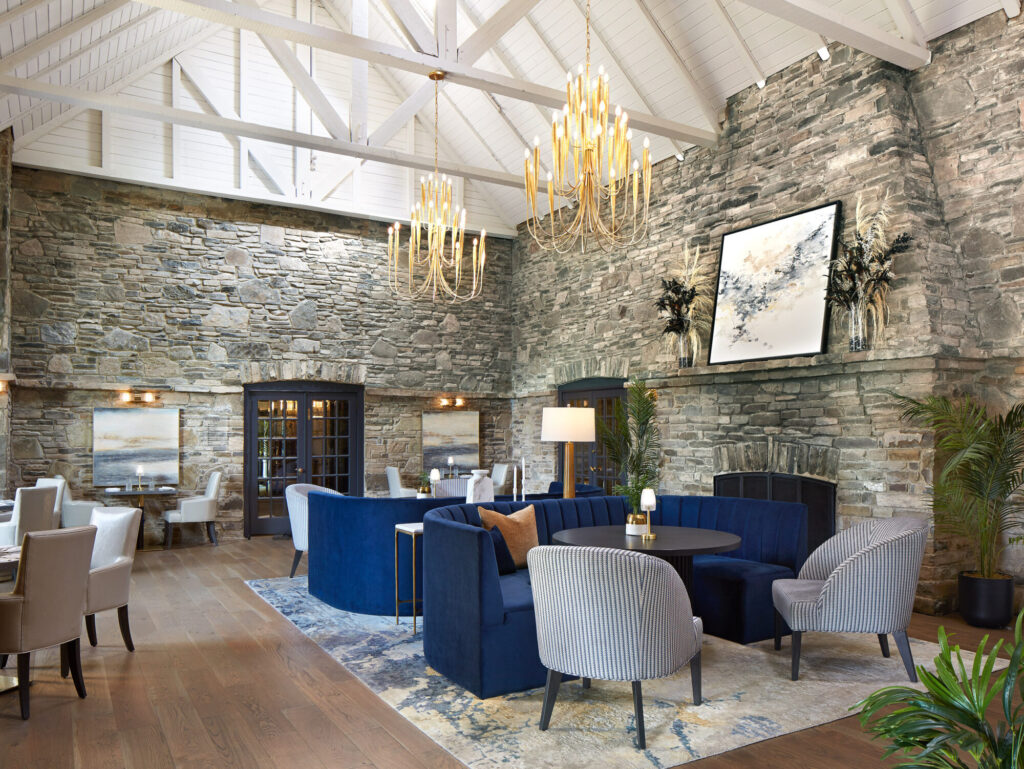Some days we all could use a spa day.
Erindale’s Glenerin Inn and Spa is known for its ability to help quests relax and bliss out with hot stone body massages, Coco and Brown Sugar Body Scrubs and Power Facials.
While the Inn has been here since 1986, the building has been offering peace-filled respite to people for almost a century.
Toronto lawyer William Watson Evans and his wife Mary built the Tudor-style mansion and carriage house in 1927 as a summer home for their family.
They called it Glenerin Hall.
Originally the estate included 85 acres of woods and pastures, two streams, a duck pond and a lily pond and numerous trails for those who wanted to wander.
Unfortunately, William died of a heart attack four years later. Mary, and her children
continued to use the house, hosting parties and gatherings through the 1930s.
Then, against the backdrop of the Second World War, Mary received a devastating diagnosis.
Cancer.

The main lounge in Glenerin Hall in the 1950s during Simpson’s tenure. (photo courtesy Glenerin Inn)
Glenerin Hall was turned over to St. Hilda’s College, an English girls boarding school,
to provide safe refuge in Canada for the students, just shortly before Mary died in October 1940.
Her youngest child John was just nine years old.
After the war, Simpsons, the Canadian department store chain, purchased Glen Erin Hall and converted it into a convalescence home for employees, the first of its kind in Canada.
Founded in 1858 by Robert Simpson, Simpsons had grown to become one of the largest retail establishments in Canada. With stores in Halifax, Montreal, London,
Regina, and its flagship store on Queen Street in downtown Toronto, Simpsons had become a major employer too.
The concept of worker welfare was gradually gaining traction in Canada during this period.
Men and women were returning from the Second World War, some with physical injuries and others with mental health conditions caused by the horrors they had witnessed.
As Frances Turner of the Simpsons publicity department explained:
“Glenerin isn’t a present. It is part of our postwar plans. We consider looking after our employees good business. If their health is good their service to us is good and we owe it to ourselves and to them to see that every means is employed to keep everybody healthy and happy.”
Erindale’s pastoral location and the design of the hall were guided by contemporary beliefs in the healing powers of nature and fresh air, which were thought to be crucial for convalescence.
In addition to the 85 acres available to explore, Glenerin Hall also had a swimming pool, hard-surface tennis court and areas for lawn bowling, badminton and croquet.
Glenerin Hall was available to all Simpson’s employees at all locations, including those working in the mail-order department- the post-war equivalent of call centres and distribution hubs – upon recommendation from a company physician.
With doctor’s note granted, employees were given an all-expenses paid stay, including travel expenses, at Glenerin Hall.
While there, employees also continued to be paid a full salary.
Nurse Dorothy Swift managed the program, which included a staff of resident nurses, cooks and support staff.
The aim was not only to restore the physical health of the employees but also to provide them with a respite from the stresses of urban life and work.
In 1947, Simpson employee Miss Kathleen Hewson described her stay at Glenerin Hall in a letter to the Globe and Mail.
Simpson’s approach to employee welfare was progressive for its time, reflecting a shift in the relationship between employers and employees.
By taking care of its workers in this way, Simpson’s department store was also investing in its own future, recognizing that the well-being of its employees was intrinsically linked to the company’s overall productivity and success.
In 1961 Simpson’s sold Glenerin Hall but continued to use the name in its line of products.

The great fireplace has welcomed guests for over a century to Glenerin, which has been a private home, a war-time school for British girls, a respite resort for Simpson’s department store employees and now the Glenerin Inn and Spa. (photo courtesy Glenerin Inn)
From the late 1940s until well into the 1970s, Canadians could wrap themselves in Glenerin’s luxury via Glenerin branded pocket-spring mattress, hemstitched sheets, pillows, bedspreads, towels, bath mats and electric blankets.
And remember young John Evans? Youngest son of Glenerin’s original owners?
He grew up to be a world-leader in global health and education. First at McMaster University, where his medical education model has been replicated around the world and then at the World Bank as the founding director of the Population Health and Nutrition department. He was the first Canadian to chair the Rockefeller Foundation in New York and then in his 70s he was the first to champion the construction of an innovation centre in downtown Toronto, contributing millions of his own money to purchase land on College Street to build the MaRS Discovery Centre.
Dr. Evans did one other very significant thing. Between 1972 and 1978 he served as President of the University of Toronto, which included overseeing the new Erindale campus, which had opened in 1967 on the banks of the Credit River, across the ravine from his family’s former estate at Glenerin Hall.
You can hear more stories about the people and events that helped shape Mississauga via our podcast, We Built This City: Tales of Mississauga, available on your favourite podcast platform or from our website.
